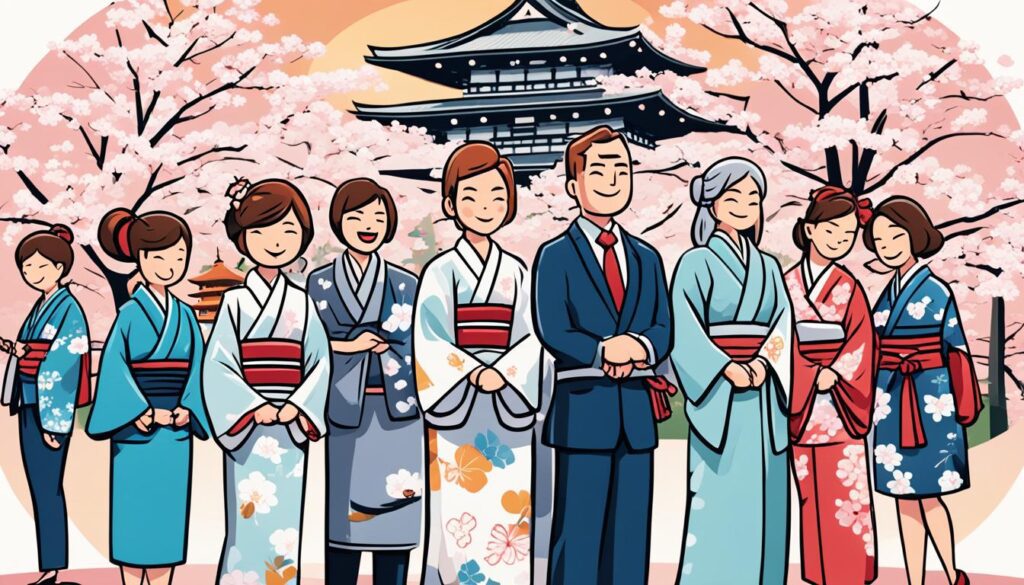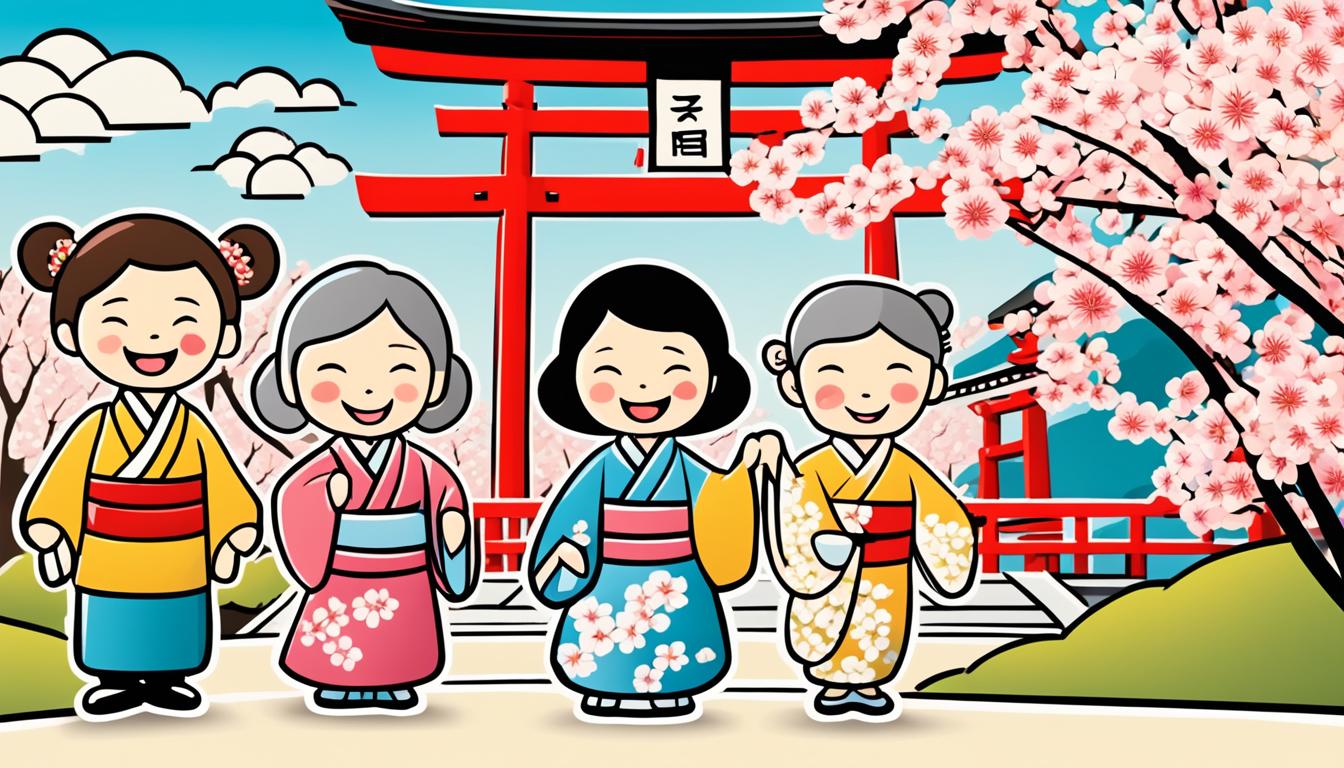Greetings are an essential part of Japanese culture and language. Knowing how to greet someone in Japanese is crucial for effective communication. Whether you want to say hello formally or casually, this article will guide you through the various ways to greet in Japanese and provide you with common greeting phrases.
Let’s dive into the meaning and grammar of Japanese greetings, pronunciation tips, equivalent words, and contextual usage. By the end, you’ll have a solid foundation for greeting others in Japanese with confidence.
Most Common Ways to Say Hello in Japanese
When it comes to greetings in Japanese, there are several common phrases that you should know. These greetings vary depending on the time of day and the specific situation. Here are some of the most commonly used ways to say hello in Japanese:
| Greeting | Translation |
|---|---|
| Ohayou | Good morning |
| Konnichiwa | Hello |
| Konbanwa | Good evening |
| Moshi moshi | Hello (on the phone) |
| Irasshaimase | Welcome (used in stores or restaurants) |
| Tadaima | I’m back (used when returning home) |
| Yo | Casual hello |
| Sumimasen | Excuse me |
Each greeting has its own specific usage and level of formality. For example, “Ohayou” is used in the morning, “Konnichiwa” is a general greeting, and “Konbanwa” is used in the evening. “Moshi moshi” is specifically used when answering a phone call. “Irasshaimase” is a polite way to welcome customers in stores or restaurants. “Tadaima” is used when you come back home. “Yo” is a casual greeting among friends, and “Sumimasen” is used to apologize or get someone’s attention. Remember to use the appropriate greeting based on the situation to show respect and cultural understanding.
Pronunciation and Etiquette for Japanese Greetings
When it comes to greeting someone in Japanese, pronunciation plays a crucial role. Unlike English, Japanese pronunciation is more predictable, as each vowel is pronounced the same way every time. This consistency makes it easier for learners to grasp the correct pronunciation of Japanese greetings.
It’s important to note that bowing is the proper way to greet someone in Japanese. Bowing is a gesture that shows respect and is deeply ingrained in Japanese culture and etiquette. The angle and duration of the bow indicate the level of respect being conveyed.
While bowing, it’s customary to avoid direct eye contact as a sign of respect. Instead, focus your gaze slightly downwards or towards the person’s necktie. Additionally, putting hands together in a prayer-like position is not a common practice in Japan.
In order to master the proper way to greet in Japanese, it’s essential to understand the cultural significance of bowing and to practice the correct pronunciation of greetings. This will ensure that your greetings are respectful and well-received by native Japanese speakers.
| Greeting | Pronunciation | Meaning |
|---|---|---|
| おはよう (Ohayou) | oh-ha-yoh | Good morning |
| こんにちは (Konnichiwa) | kohn-nee-chee-wah | Hello / Good afternoon |
| こんばんは (Konbanwa) | kohn-bahn-wah | Good evening |
These are just a few examples of Japanese greetings. By mastering the pronunciation and understanding the etiquette behind Japanese greetings, you will be well-prepared to engage in polite and respectful conversations in Japan.
Japanese Greetings for Different Situations

Japanese greetings vary depending on the situation and the relationship between the individuals. It is important to understand the appropriate greeting for each situation in order to navigate social interactions in Japan effectively.
When it comes to greetings in Japan, there are specific phrases used for different contexts. Here are some examples:
Greetings for Work
When greeting your colleagues or superiors at work, it is common to say “おはようございます” (Ohayou gozaimasu) in the morning and “こんにちは” (Konnichiwa) in the afternoon. It is also customary to bow as a sign of respect.
Greetings for Friends
With friends, a casual greeting such as “おはよう” (Ohayou) for good morning or “こんにちは” (Konnichiwa) for hello is commonly used. The level of formality depends on the relationship and familiarity between friends.
Greetings for Phone Calls
When answering the phone, it is customary to say “もしもし” (Moshi moshi) to indicate that you are on the line. This greeting is only used for phone conversations and not in face-to-face interactions.
Greetings for Stores
When entering a store, you may hear the greeting “いらっしゃいませ” (Irasshaimase), which means “welcome”. This greeting is used by the staff to welcome customers and is considered polite.
Greetings for Homecomings
When returning home, it is common to say “ただいま” (Tadaima), which translates to “I’m back”. This greeting is often followed by “おかえり” (Okaeri) from the family members as a way of welcoming you back.
Greetings for Guests
When guests arrive, it is customary to greet them with “いらっしゃいませ” (Irasshaimase) to welcome them into your home or establishment. This shows hospitality and respect.
Greetings for Strangers
When encountering strangers, a general greeting such as “こんにちは” (Konnichiwa) or “すみません” (Sumimasen) for excuse me is appropriate. These greetings help to establish a polite and respectful atmosphere.
Greetings for Business
In business settings, formal greetings are expected. It is common to use phrases such as “よろしくお願いします” (Yoroshiku onegaishimasu) to express your desire to work together. Bowing and maintaining proper etiquette are also important in business greetings.
Understanding and using the appropriate greetings for different situations in Japan is crucial for building positive and respectful relationships. Practice these greetings to enhance your cultural understanding and communication skills.
Informal Ways to Say Hello in Japanese
In addition to formal greetings, there are also informal ways to say hello in Japanese. These greetings are often used among friends and young people in Japan. Informal greetings such as “Yo“, “Oi“, “Yaa“, and “Sumimasen” are more casual and typically used in less formal settings. It’s important to know when and with whom it is appropriate to use these informal greetings.
| Informal Greeting | Meaning |
|---|---|
| Yo | A casual and friendly way to say hello. |
| Oi | An informal greeting used among friends. |
| Yaa | A laid-back and colloquial way to say hello. |
| Sumimasen | Although this word is typically used to mean “excuse me”, it can also be used in a more informal way to say hello. |
When using these informal greetings, it’s essential to consider the context and the relationship with the person you are greeting. While they may be suitable among friends or in relaxed social settings, it’s important to be respectful and use appropriate greetings in more formal situations.
How to Say Goodbye in Japanese
Saying goodbye is just as important as saying hello in Japanese. When it’s time to part ways, there are several meaningful phrases you can use. Let’s explore some common Japanese goodbye phrases:
Sayonara
One of the most well-known ways to say goodbye in Japanese is “Sayonara.” This formal phrase is often used when you’re saying goodbye to someone you may not see for a while or when leaving a formal setting.
Jāā ne
If you’re looking for a more casual way to say goodbye to friends, colleagues, or acquaintances, you can use the phrase “Jāā ne.” This friendly expression is commonly used in everyday conversations.
Oyasumi nasai
When it’s time to say goodnight, you can use the phrase “Oyasumi nasai.” This is a formal way to bid someone farewell before they retire for the night.
Otsukaresama
In Japanese culture, acknowledging someone’s hard work and expressing gratitude is important. That’s why the phrase “Otsukaresama” is commonly used to say goodbye and show appreciation for someone’s efforts. It can be used in both formal and informal settings.
Remember, the way you say goodbye can vary depending on the situation and the level of formality. Whether you’re saying goodbye to a friend, a colleague, or a stranger, using the appropriate Japanese goodbye phrase shows respect and cultural understanding.
Conclusion and Final Thoughts
Learning how to say hi and how are you in Japanese is the first step towards mastering the art of polite conversation. Japanese greetings play a vital role in the language and culture, and knowing the appropriate greeting for each situation is crucial. By familiarizing yourself with common Japanese greeting phrases, you can navigate social interactions in Japan with ease while showing respect to others. Practicing these greetings and perfecting your pronunciation will ensure effective communication in the Japanese language.
Whether you’re a beginner or already have some knowledge of Japanese, learning greetings is an essential aspect of language acquisition. Understanding how to greet someone politely sets the tone for the conversation and helps build positive relationships. From formal to casual greetings, it’s important to adapt your speech according to the context and level of familiarity with the person you’re speaking to.
Remember, Japanese culture places great emphasis on respect and politeness, and mastering Japanese greetings is an integral part of that. By incorporating these useful phrases into your vocabulary, you not only enhance your language skills but also demonstrate appreciation for Japanese customs. So, keep practicing, continue building your proficiency, and embrace the beauty of polite conversation in Japanese!

